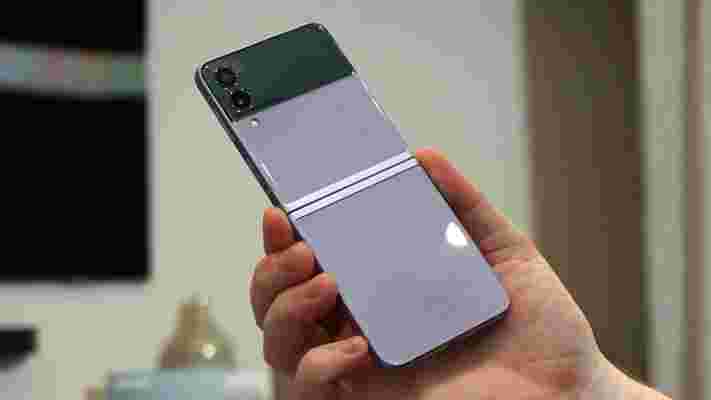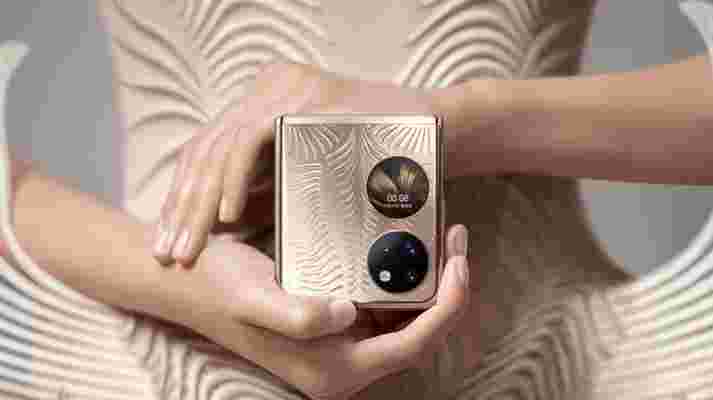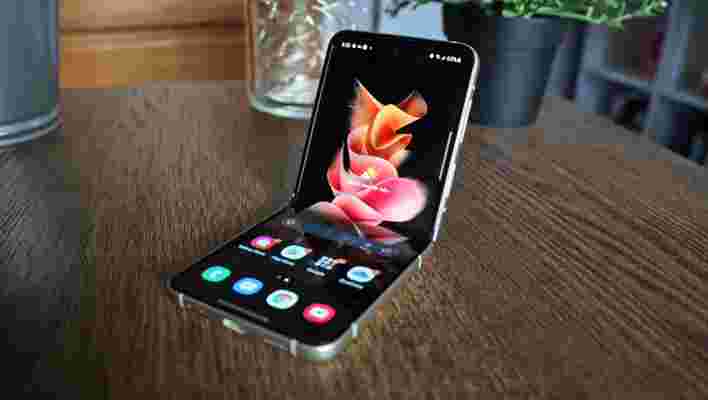
CD Projekt Red delighted many last month by revealing that The Witcher 4 is in development (even if it’s not technically called that). Kicking off a new saga, the next Witcher game will focus on a different Witcher school , but what surprised many was the choice of tech powering it.
The Witcher 4 isn’t using the studio’s proprietary REDengine that powered Cyberpunk 2077 and The Witcher 3. Instead, CD Project Red confirmed it will be using Unreal Engine 5, and now we know why.
Speaking during yesterday’s State of Unreal event, CD Projekt Red's chief technology officer Paweł Zawodny said, "Our collaboration with Epic has just started. It was the shift towards open-world support that brought Unreal Engine 5 to our attention. This opens a new chapter for us where we really want to see how our experience in building open-world games gets combined with all the engineering power of Epic."
Joining Zawodny for this talk was Jasom Slama, game director at CD Projekt Red. Detailing how this collaboration begun, he confirmed "there was one demo that happened last year, that was the medieval environment demo, where at one point there's a notice board that looks strangely familiar to things we've done in the past – that even has a sign that says 'monster slayer wanted'." It’s an obvious nod to The Witcher, which often sees Geralt of Rivia picking up work from local notice boards.
Evidently, this caught the team’s attention. Elaborating further, Slama continues on, stating "And I'm like, 'Hmm, are they trying to tell us, come over to Unreal Engine, look how great your games can look on there? Was that whole demo made with that nefarious purpose?' I don't know, but it definitely caught my eye."
Moving onto the team’s philosophy for open-world games, Slama said it's important to keep in mind "the possibilities of the things that can go wrong," explaining how the scenarios you’ve got to consider are "exponentially higher than linear games." Because players can go in any direction, he confirmed development requires "a really stable environment" due to the sheer amount of variables. As such, the team needs to make changes without breaking many other things, and using Unreal Engine 5 meant they already had the tools.
CD Projekt Red's art director, Jakub Knapik, also had some positive things to say about UE5. Calling Unreal Engine a "toolbox," Knapik stated that "a lot of features, a lot of solutions are already there that allow teams to just try new stuff," offering more flexibility. Continuing further, Knapik said "the fact that Unreal is used by a lot of teams already in the world, a lot of perspectives are projected into the design of the tools and that helps the tool to be way more agile."
An Epic partnership

Evidently, Knapik’s impressed by what Epic’s offering. "It’s a really really cool technology to prototype and make environments really quickly, really beautiful, and they’re realistic." In terms of CD Projekt Red and Epic’s collaboration, Knapik said, "the two companies that really want to achieve something great" and that they won’t stop after developing some features and want to develop "something extraordinary."
Yesterday’s State of Unreal showcase didn’t stop with CD Projekt Red. Epic Games revealed numerous studios are working on Unreal Engine 5 projects, which includes Crystal Dynamics, who announced the next Tomb Raider game. Like The Witcher 4, we don’t know much about it currently, though Tomb Raider franchise general manager Dallas Dickinson advised this new engine "translates into next-level storytelling and gameplay experiences."
The Samsung Galaxy Z Flip 3 was one of the revelations of 2021, combining a classy yet compact foldable design with an attainable price tag to produce the first genuinely mass market foldable phone.
This makes the Galaxy Z Flip 3 the compact foldable phone to beat, and that’s a challenge the Huawei P50 Pocket swiftly took up.
So how does the P50 Pocket fare against its popular rival? Let’s take a closer look at what Huawei’s phone has to offer, and whether it’s good enough to take the foldable top spot.
Huawei P50 Pocket vs Samsung Galaxy Z Flip 3 price and availability
The Huawei P50 Pocket was announced in China on December 23, while it commenced its global rollout on January 26.
The regular model with 8GB of RAM and 256GB of storage is priced at €1,299, which works out to around $1,470 / £1,080 / AU$2,044. The P50 Pocket Premium Edition with 12GB of RAM and 512GB of storage is priced at €1,599, which equates to roughly $1,810 / £1,330 / AU$2,515.
The Samsung Galaxy Z Flip 3 went on sale on August 27, 2021. The 128GB model costs $999 / £949 / AU$1,499, while the 256GB model sets you back $1,049 / £999 / AU$1,599.
Even taking just the cheapest model, the Huawei P50 Pocket is a more expensive handset than the Samsung Galaxy Z Flip 3.

Design
Both of these phones are distinguished by their clamshell designs, which sees them folding out from a compact square to a normally proportioned smartphone.
The Huawei P50 Pocket arguably does this better, at least in certain key respects. Its two screen components lie completely flat next to each other, with no sign of the gap that the Galaxy Z Flip 3 exhibits. Huawei’s ‘Multi-Dimensional’ hinge also serves to produce a slightly smaller crease than Samsung’s effort once the phone is fully open.
Conversely, only the Galaxy Z Flip 3 can keep itself open at various angles. Samsung’s phone manages to attain an IPX8 water-resistance rating too, which the Huawei phone can’t match.

In terms of facts and figures, the Huawei P50 Pocket is the larger phone at 170 x 75.5 x 7.2mm and 190g. The Samsung Galaxy Z Flip 3 measures 166 x 72.2 x 6.9mm and 183g.
Huawei really goes out with the flashy design, particularly with the more expensive Premium Edition with its embossed gold finish. The Samsung Galaxy Z Flip 3, for its part, represents a welcome refinement of the previous Flip phones, with a slicker and more appealing aesthetic. We particularly like the two-toned effect of the rear cover.
Both phones place their fingerprint sensors in their power buttons rather than underneath their displays.

Display
Both phones feature larger fold-out displays and secondary external displays.
With the Huawei P50 Pocket , the main screen is a 6.9-inch OLED, with a 2790 x 1188 resolution. In the case of the Samsung Galaxy Z Flip 3, that main screen is a 6.7-inch AMOLED with a 2640 x 1080 resolution.
Huawei’s display is slightly larger and sharper, then, but there really isn’t much in it. Both displays can hit 120Hz refresh rates, too.
As for those external displays, the Huawei P50 Pocket gives you a circular 1.04-inch OLED with a 340 x 340 resolution, and the Galaxy Z Flip 3 supplies a rectangular 1.9-inch AMOLED with a 512 x 260 resolution. The Samsung wins in this regard, with a far larger and thus more practically useful external screen.
To be clear, both of these external screens are mainly used for showing the time and simplified notification details when closed. But the Samsung appears to marry function with form a little better.
Camera
The Huawei P50 Pocket ostensibly gives you a triple-camera system, while the Galaxy Z Flip 3 makes do with a dual-camera setup. But in practice, they’re both dual-camera phones.
Huawei’s system seems to be more impressive than Samsung’s, led by a 40MP wide sensor and accompanied by a 13MP ultra-wide. But the unexpected provision is a 32MP ultra-spectrum camera, which apparently captures invisible wavelengths.
Why would you want to capture invisible wavelengths in your shots? Mainly for creative fluorescent shots of plants and foliage, it seems, though it also provides depth and color info to the other two sensors.
For the Galaxy Z Flip 3’s part, you’re getting a pair of 12MP sensors – one for wide, the other for ultra-wide. It’s not massively compelling, though Samsung’s camera know-how is still sufficient to produce shots that our reviewer found were “nicely detailed and colorful.”
We still need to spend some proper time with the Huawei to be sure, but it seems to have a superior camera system here.
Specs and performance
Both of these phones run on Qualcomm’s Snapdragon 888 chip, which means we’re looking at two phones that can run just about as fast as any 2021 Android flagship.
Of course, we’re into 2022 now, and there’s a new Snapdragon in town in the Snapdragon 8 Gen 1. The Huawei P50 Pocket’s recent global launch and significantly higher pricing don’t look too well in that context.
You’re getting 8GB of RAM as standard with both phones, though the Premium Edition of the Huawei P50 Pocket gives you 12GB.
There’s one notable spec difference here, and it’s seemingly related to Huawei’s ongoing political troubles. The P50 Pocket doesn’t support 5G, unlike the Samsung Galaxy Z Flip 3.
Whether you care about 5G connectivity or not, it’s undoubtedly reached a point where the feature can be considered a given for all but the cheapest phones. We certainly expect it in our flagships by now.
On the storage front, the Galaxy Z Flip 3 gives you either 128GB or 256GB, while the Huawei P50 Pocket supplies either 256GB or 512GB.
Perhaps the biggest win for Samsung is the usual one when comparing it with a Huawei phone. Huawei’s ongoing issues with western governments mean that you don’t get access to Google Play Services, which means no Google apps and no Google Play Store.
Huawei has worked hard on work-arounds, but it’s undeniably a suboptimal situation. The Galaxy Z Flip 3 has no such worries, and Samsung’s One UI is quite a pleasant and fully featured interface these days.
Battery
Both of these phones sacrifice something in the way of their battery capacity in order to fit into those slender foldable profiles. However, the Huawei P50 Pocket just about comes out on top.
Huawei has managed to pack in a 4,000mAh battery, while the Galaxy Z Flip 3 gives you a 3,300mAh cell.
It remains to be seen how this will affect the Huawei P50 Pocket’s stamina, but we already know about the Galaxy Z Flip 3, and it’s not too hot. Our reviewer struggled to get through a full day of more intensive usage on a single charge.
The Huawei P50 Pocket supports 40W wired charging to Samsung's 25W, which is an advantage for the newer phone. However, Huawei’s foldable doesn’t support wireless charging at all, while the Samsung supports up to 11W.
Like 5G, while you might not consider wireless charging essential, it’s certainly something you expect to see in a flagship phone.
Takeaway
We haven’t quite readied our hands-on thoughts for the Huawei P50 Pocket, but it’s certainly got an uphill battle taking on the Samsung Galaxy Z Flip 3.
Not only is it more expensive, but it doesn’t feature 5G or wireless charging, and it isn’t water-resistant to the same degree. Then there’s the perpetual issue with modern Huawei phones in that they don’t support key Google services.
While the Huawei P50 Pocket does some promising things with its hinge design, and its camera system is almost certain to be superior to its rival, we’re steering towards the Galaxy Z Flip 3 on this one. It’s simply a far safer bet.
You don’t have to step outside every time you want a breath of fresh air. With a quality air purifier, you can get that fresh air wherever you want in your home. With a high filtration level you can cut down on nasty things to breathe in, from allergens like pollen and dander, to pollutants like smoke. The kind of fresh air Dreo is delivering with its Macro Pro air purifier will even deal with bacteria and virus particles in the air.
Whether you want clean air around the clock in big or small rooms, the Dreo Macro Pro air purifier is designed to deliver a constant supply of fresh, filtered air you’re going to love breathing in.
Dreo’s air purifier relies on a three-stage system to really get that air clean. A large pre-filter first captures large debris like dust, lint, pollen, and animal hairs. With those out of the way, the H13 True HEPA filter in the middle of the line can capture microscopic particles as small as 0.3 microns — that’s where you’ll find dust mites, bacteria and virus particles.
Finally, an activated carbon filter will absorb bad odors, formaldehyde, and volatile organic compounds. The whole system will capture 99.97% of particles larger than 0.3 microns.
All that filtration is put to good use in the Dreo Macro Pro air purifier, with the system packing a capable, 360-degree intake system that takes in air from all directions.
This sees a great amount of air pass through the system for filtration. In just an hour, this system can filter that air of a 679-sq.-ft room twice. Smaller rooms get fully refreshed even faster, with a smaller, 283-sq.-ft room would get recycled five times an hour.
Something like a small, 100-sq.-ft kids bedroom would get fully filtered every 4.4 minutes, ensuring plenty of fresh air. Dreo’s air delivery rates and filtration are independently tested and certified by a variety of organizations including SGS and the California Air Resources Board.

As powerful as the Dreo Macro Pro air purifier is at cleaning out pollutants, it’s also incredibly efficient to operate and uses very little power. It’s Energy Star certified and can run at maximum power for a whole week for around 30 cents.
You won’t notice it running all the time either. The Dreo Macro Pro is impressively quiet. In its sleep mode, it’ll operate at just 20dB. That’s quieter than a library.
Also, you don’t have to just guess when you should run it and when you can turn it off as the system includes an air quality indicator that will show you the air quality. The purifier will even let you set it to Auto mode, which will adjust based on the amount of particulate in the air.
That air quality system also helps you know when to swap filters. Many air purifiers just tell you to swap filters after they’ve operated for a set number of hours.
The Dreo Macro Pro uses an advanced system to monitor the filter life, so you won’t have to worry about running the filter when it’s exhausted or waste money replacing filters that are still good.
If you’re ready to freshen up the air in your home, you can find the Dreo Macro Pro Air Purifier from Dreo and from Amazon .
Leave a Comment